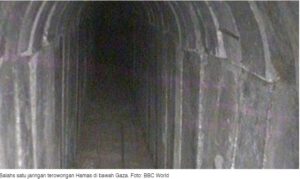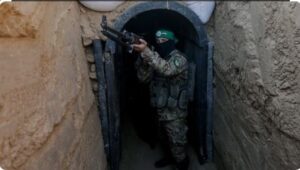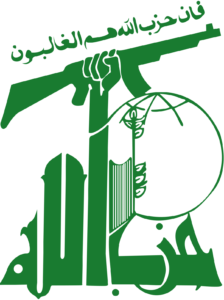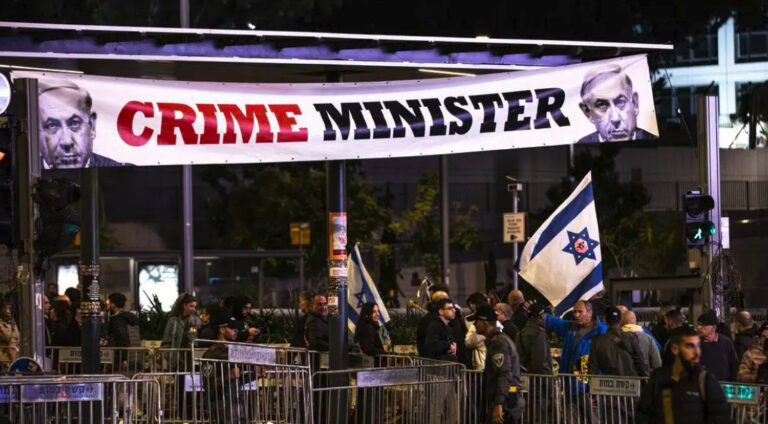
STRATEGIC ASSESSMENT. The Middle East appeared on the brink of a new regional war following clashes between Israel and Palestinian militant factions across Israel’s northern and southern borders. A brief cycle of rocket fire on Israel from Lebanese territory and the Gaza Strip and Israeli retaliatory air strikes began on April 6. The original shots were apparently retaliating for Israel’s two violent raids to remove several hundred Palestinians barricaded inside Jerusalem’s Al-Aqsa Mosque, the third holiest site in Islam. The original 34 rocket salvo marked the largest strike at Israel out of Lebanon since the thirty-three day Israel-Hezbollah war of 2006.

The Al-Aqsa confrontations occurred amid escalating violence between Palestinians and Israelis on the West Bank and in East Jerusalem, and coincided with the Muslim holy month of Ramadan, the Jewish Passover holiday, and the run-up to the Christian Good Friday and Easter Sunday holidays. Israeli-Palestinian violence has escalated as Israeli domestic tensions intensified over Prime Minister Binyamin Netanyahu’s efforts to enact reforms that would undermine the authority of Israel’s judiciary. The renewed threat to Israel by militant factions on Israel’s borders appeared to rally Israel’s national security apparatus behind the embattled Netanyahu, offering to at least temporarily reduce the political threat to his position as prime minister.

While firing rockets from the Gaza Strip has become a relatively common response to Israeli violence against Palestinians by Palestinian militant factions, the salvo that set off the latest clashes came from across a southern Lebanese border that Israel and its adversary, Lebanese Hezbollah have generally kept calm since 2006. Israeli leaders immediately attributed the rocket barrage, the majority of which was intercepted, and which caused few injuries and little damage, to Hamas and other Palestinian militants based in south Lebanon. While Israeli military leaders insisted that Lebanese Hezbollah, which controls much of south Lebanon, would have had real-time knowledge of the launches, Tel Aviv declined to blame Hezbollah for involvement in the strikes directly. IDF air strikes on southern Lebanon were publicly identified as targeting Palestinian militant – not Hezbollah – positions in south Lebanon.
The Israeli retaliation targeted sparsely populated areas with little risk of civilian casualties inside Lebanon. Helping the Netanyahu government downplay any Hezbollah role, Lebanon’s caretaker prime minister, Najib Mikati, condemned attacks launched on Israel from Lebanese territory. Lebanese security forces subsequently sought to dismantle Palestinian firing positions in Lebanon. Although the Israel-Palestinian cycle of attacks subsided, tensions remained high as a result of subsequent terrorist attacks in the West Bank and in Tel Aviv that killed three and wounded at least eight others, some of them foreign tourists. On April 8, Israel reported that six rockets had been launched from inside Syria at Israel, though only three managed to cross into Israeli territory.

Reported messages passed privately to Israel by Hezbollah leaders in Lebanon might have contributed to Israel’s decision to downplay any Hezbollah connection to the fighting. More broadly, however, Israeli leaders calculate that retaliation against Hezbollah risked far-reaching consequences. Lebanese Hezbollah, which formed as an outgrowth of Iran’s 1979 Islamic revolution, is Tehran’s main regional ally. Iranian leaders have consistently undertaken significant strategic risks to empower Hezbollah economically, militarily, and politically, and Iran would likely try to assist Hezbollah in any new conflict with Israel. Since the 2006 war, Iran has resupplied Hezbollah with rockets and missiles of a wide variety of ranges, payloads, and capabilities, though estimates of how many of these armaments Hezbollah possesses range from 40 thousand to 150 thousand. Iran has also supplied the group with a good deal of armed drones, helping bring the group’s total drone count (both offensive and surveillance) to around two thousand, according to the Alma research group. Most Iran-supplied weaponry is unguided, but an increasing number is fitted with precision-guiding capabilities. Hezbollah’s missiles can now reach areas in Israel’s south. Israeli military officials have openly acknowledged that the sophisticated missile and rocket defense systems they have developed recently, including David’s Sling and Iron Dome, would strain to defend against the large volume of fire that Hezbollah could direct against Israeli cities and towns.

Even as Tel Aviv seeks to avoid a broader war, the potential for further conflict to expand to not only Iran but also, potentially, the United States, is growing. Tensions have been escalating recently between Iran and both Israel and the United States. In early 2023, the IDF expanded its strikes on Iranian positions in Syria, including bombing Iran-run facilities at the Damascus and Aleppo airports. In late March, U.S. forces struck bases used by groups affiliated with Iran’s Islamic Revolutionary Guard Corps (IRGC) in Syria in retaliation for a drone attack, launched from IRGC-controlled facilities, on a U.S. base in eastern Syria, which killed one U.S. contractor and wounded five U.S. military personnel and one additional contractor. However, the United States did not strike again after pro-Iranian forces conducted a further salvo in response, drawing criticism from some U.S. experts and lawmakers.

Many experts, both in Israel and the United States, argue that military action against Iran is necessary not only to counter Tehran’s support of regional armed factions but also to set back its expanding nuclear program and to deter Tehran from further supplying armed drones to Russia for use against Ukraine. Several experts asserted that the attacks on U.S. bases in Syria seemed to contradict Tehran’s professions of an intent to de-escalate regional conflict – an intent expressed by Iranian leaders when signing a March 10, China brokered accord with Saudi Arabia to restore full diplomatic relations after a seven-year break. To demonstrate resolve against Iran, U.S. Navy officials announced last week that they were sending a nuclear-powered U.S. submarine, capable of carrying more than 150 Tomahawk cruise missiles, to the Persian Gulf. While U.S. military leaders asserted that the submarine deployment was intended to support Gulf security and stability amid reports that Iran is planning attacks in the region, the submarine mission may be designed to assuage Gulf states’ growing doubts particularly those of Saudi Arabia and the United Arab Emirates, concerning U.S. commitment to security in the region (TSC).





